Battleship Texas Hard Hat Tour - May 5th, 2007
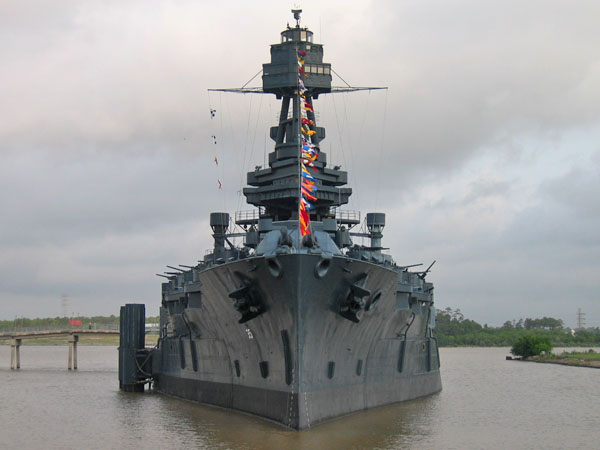
The Battleship Texas BB-35 has been open for touring since April 21, 1948
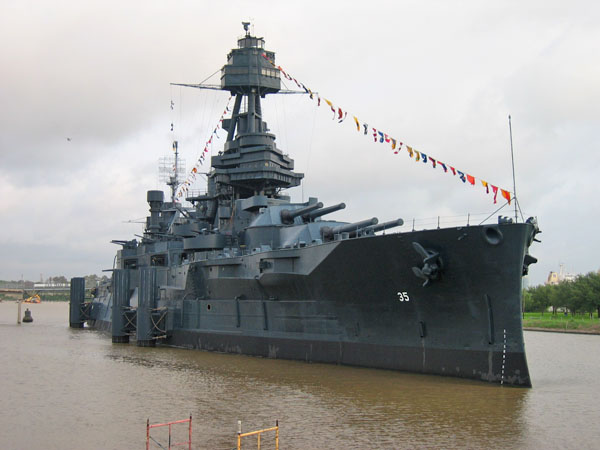
Nice naval flags added for today's visit
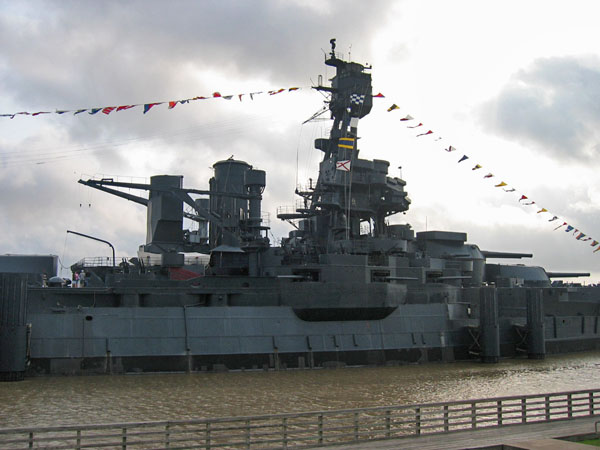
Over to the starboard stern to board the ship
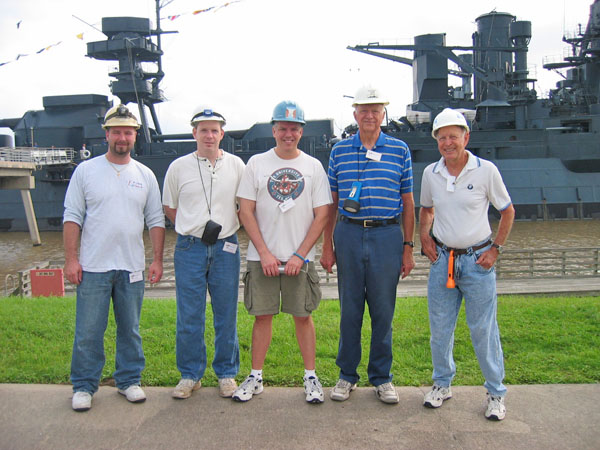
Today's 830am Hard Hat Tour Red Group is ready to go

Board the vessel in the shadow of the Monument
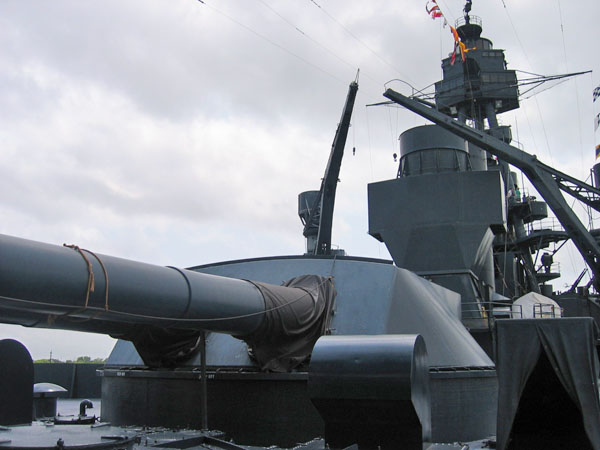
Head below ship at middle turret #3
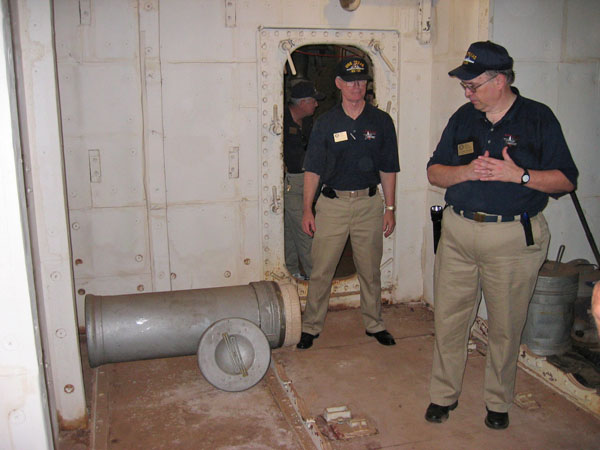
The tour starts in the ammo handling room & powder magazine where powder tanks would be stacked floor to ceiling
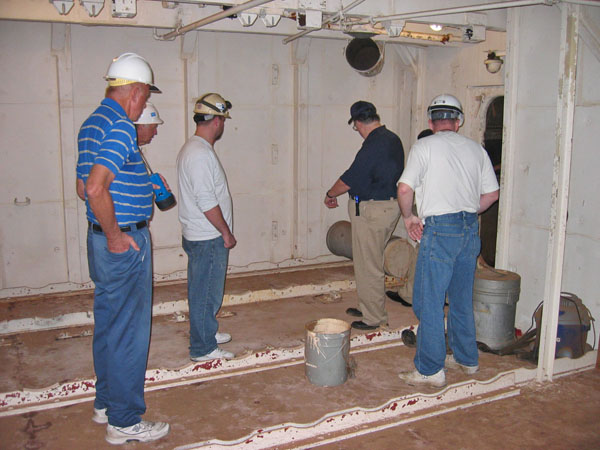
Two 105 pound propellant charges are stored in each alumninum can in the powder magazine
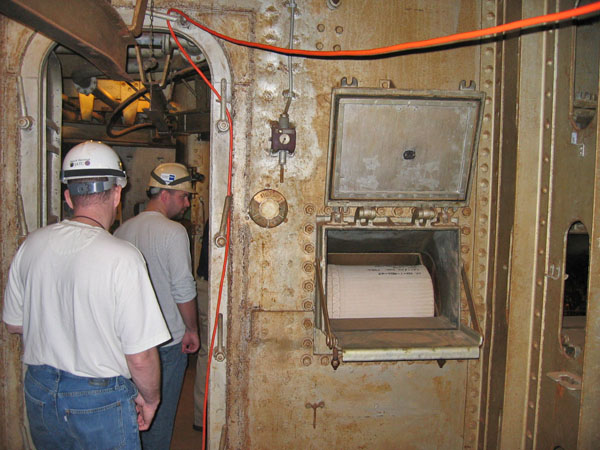
Charges are passed through the flash proof powder scuttle to the Lower Handling Room
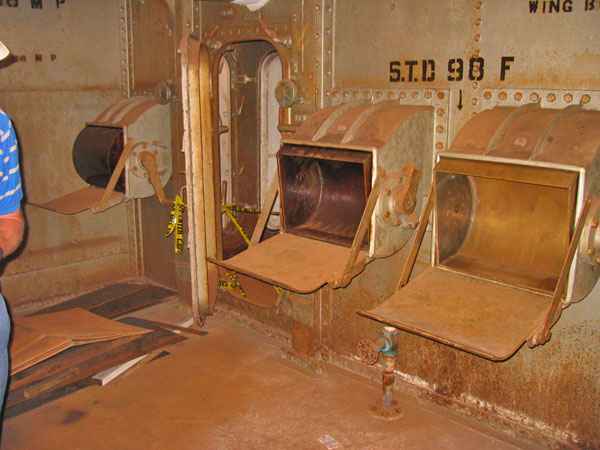
Powder is received in the Lower Handling Room and hand carried to the powder hoist
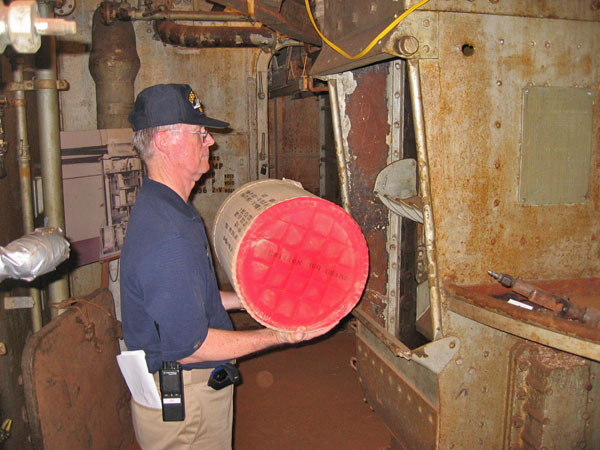
A strong farm boy loads charges into the powder hoist and are carried up to turrets
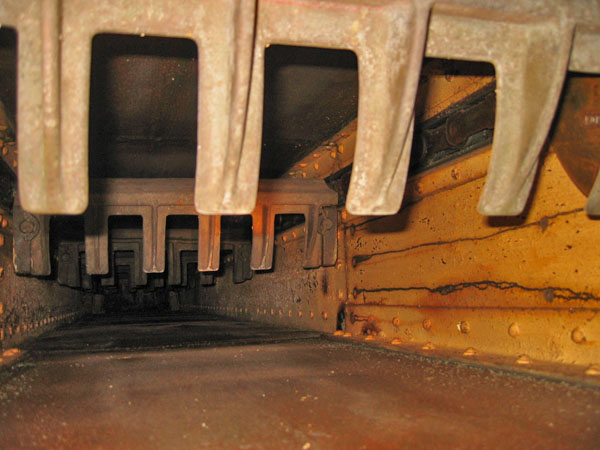
The Powder Hoist shaft lifts the powder charges up to the Powder Flat, just below the turret
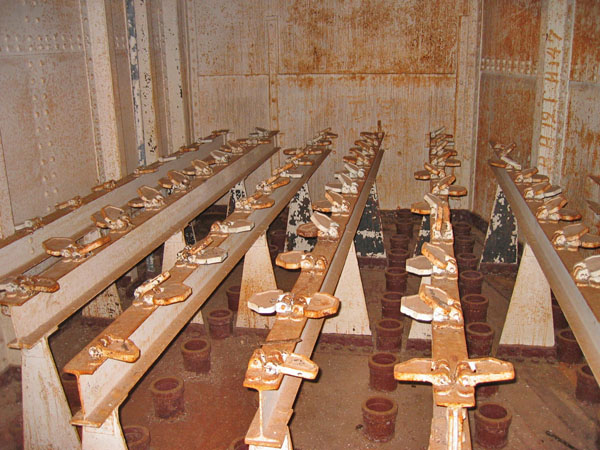
Projectile Magazine stores 1275 lbs. high capacity rounds and 1500 lbs. armor piercing rounds
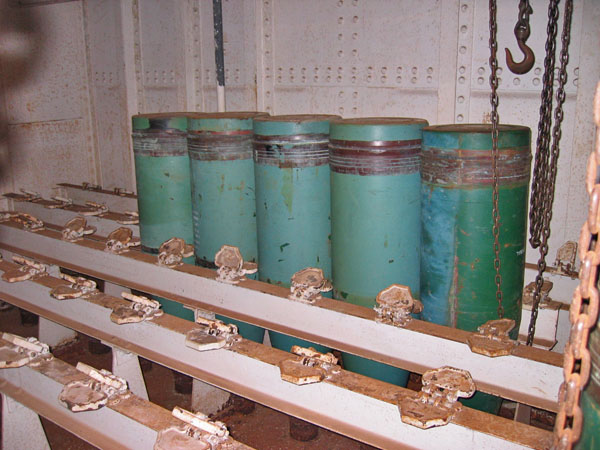
Projectiles are stored nose down and moved by metal rings temporarily stored in their bases
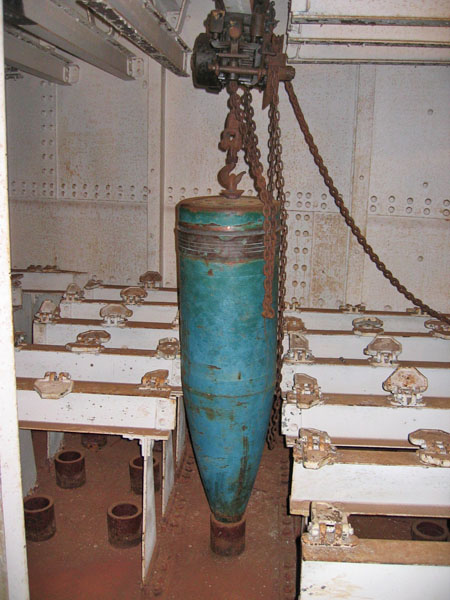
Projectile picked up with block & tackle and moved via mounted trolley into Lower Handling Room
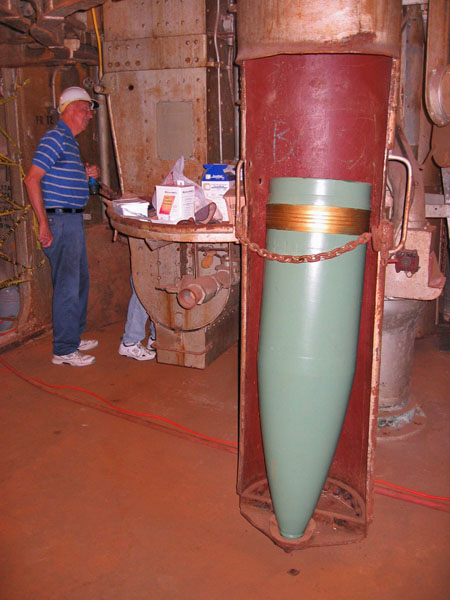
The Lower Projectile Hoist lifts the heavy shells up to the Upper Handling Room
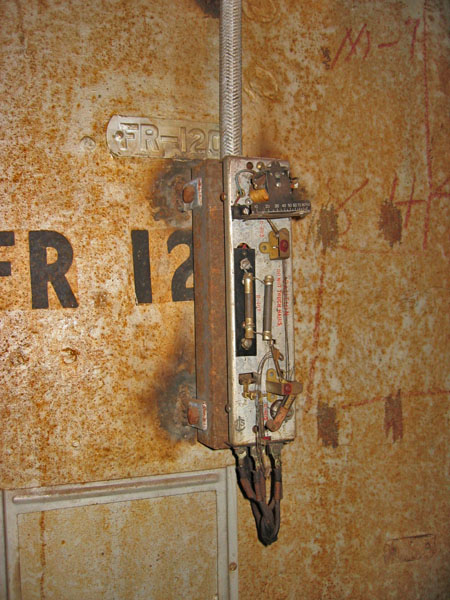
Notice an old school thermostat has seen better days
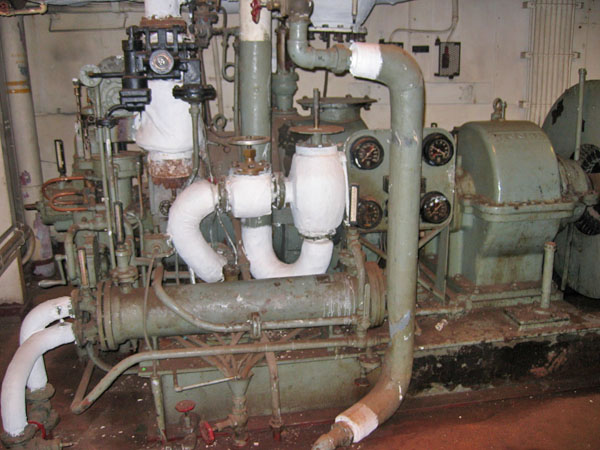
Next stop on the tour is the Forward Dynamo Room
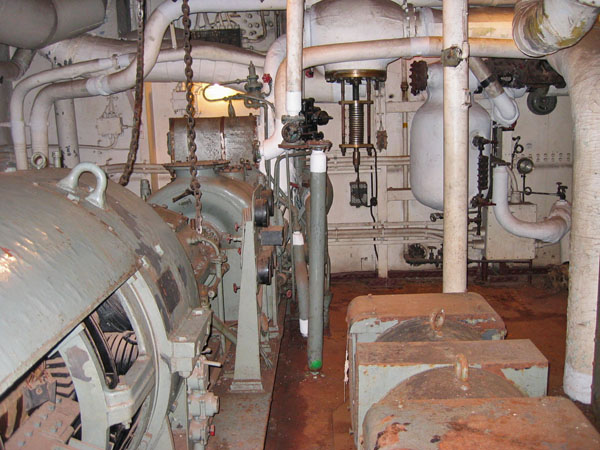
The Dynamo Room generates electric power for the ship
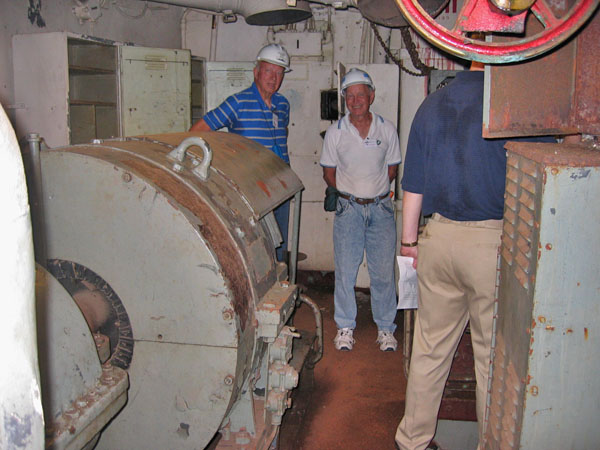
Jerry and Lyle are enjoying the tour

Despite its age, you still can't touch the live board
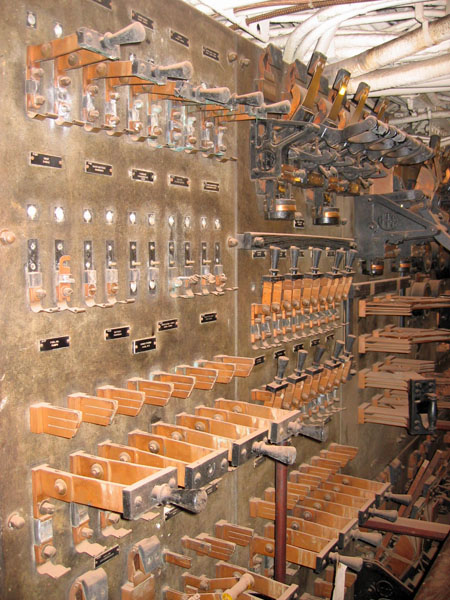
Climb up a deck to the Power Distribution Room
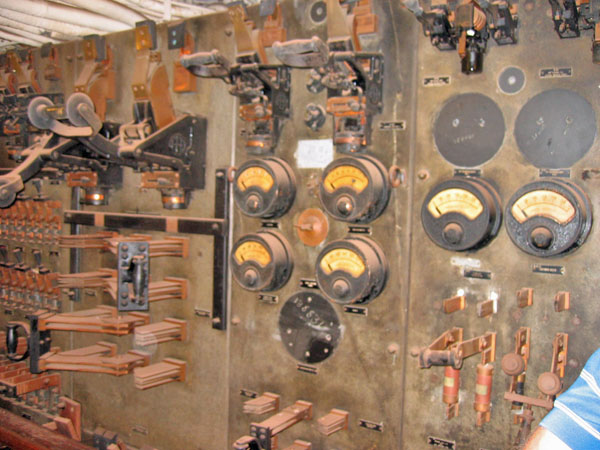
Watch out for the main switchboard in rough seas
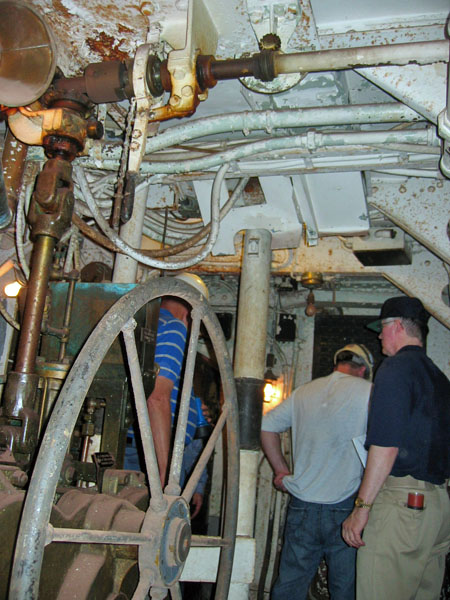
The Central Station is a heavily armored compartment that allows for steering the ship and damage control
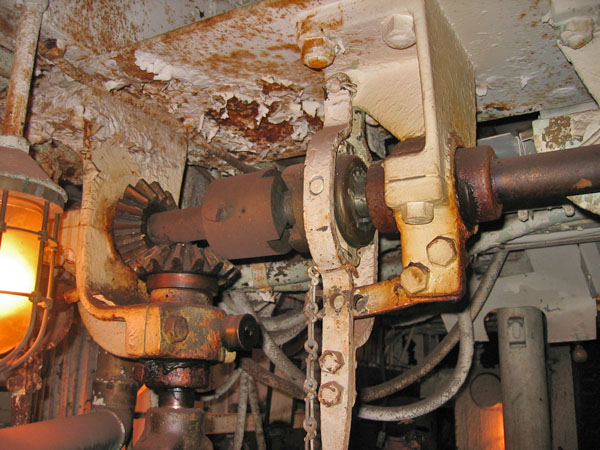
Disconnect the mechanical links up to the Navigation Bridge & Conning Tower above to enable steering here in this area
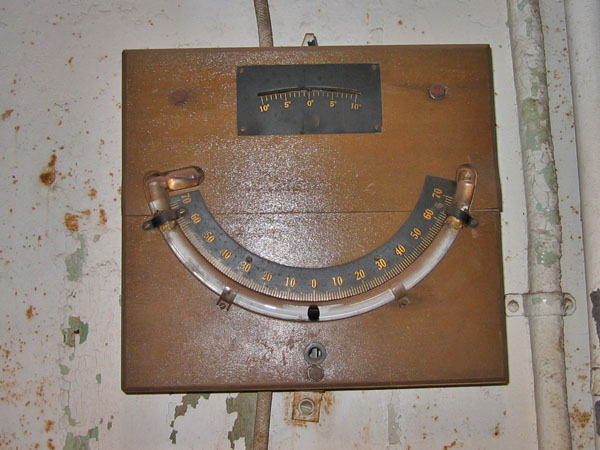
Inclinometer indicates the degree of ship list to help form strategies for countering flooding
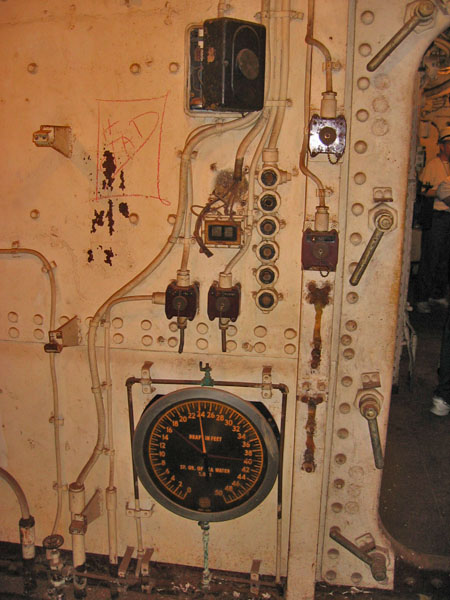
The Draft Gauge near the floor precisely measures distance from the waterline down to the ship's keel
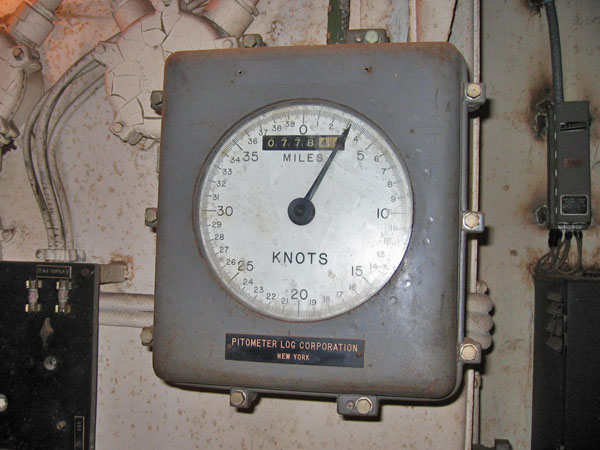
Knot Log (speed indicator) helps monitor the ship
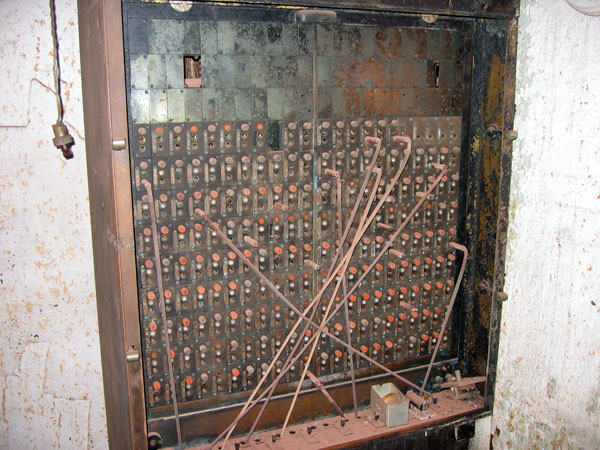
Switchboard allows communication within the entire ship
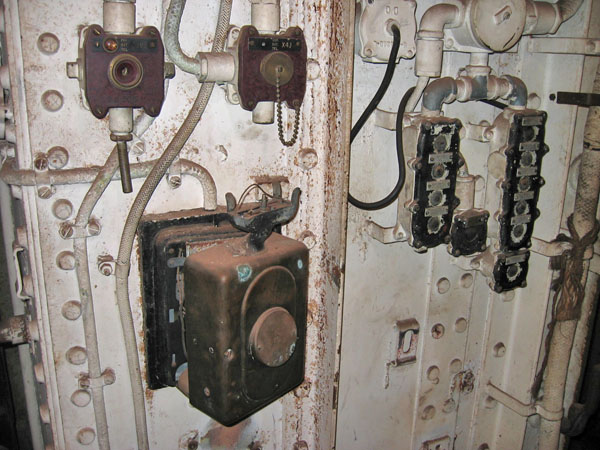
Communications are critical for determining the nature and extent of damage
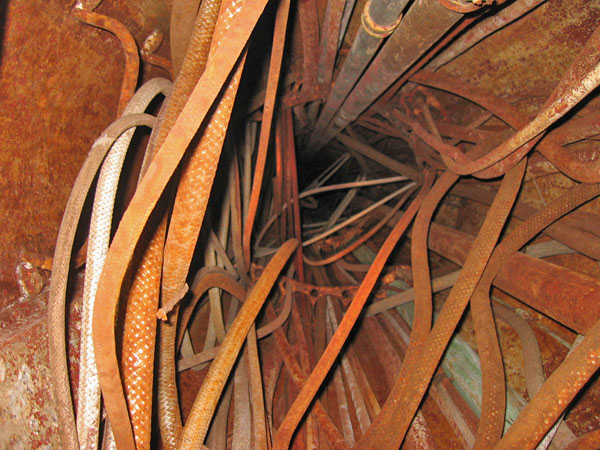
Even in 1913, there were cable shafts, and this one brings forth cool air!
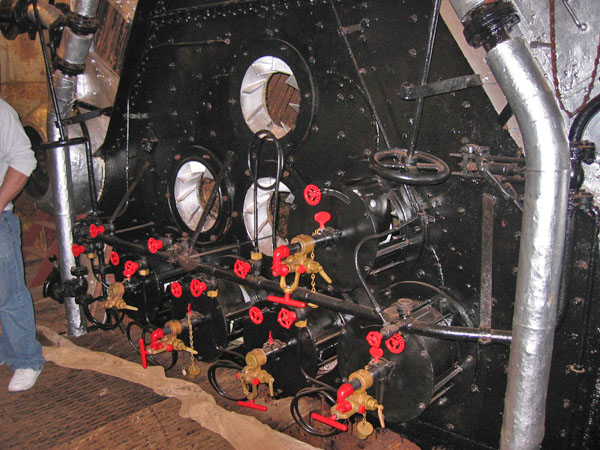
The Boiler Room shows extensive refurbishment on one side
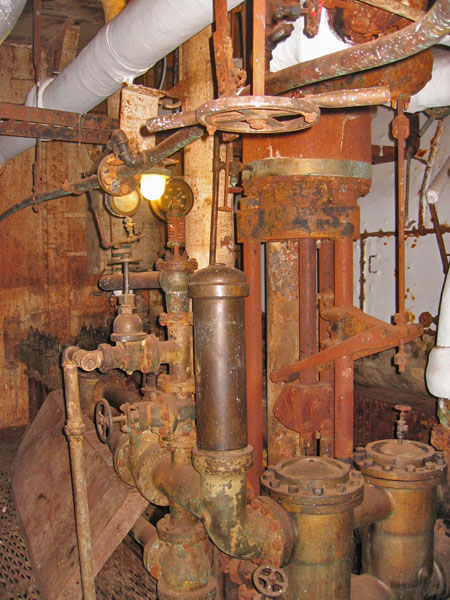
This room had 20 feet of water in it for 20 or so years
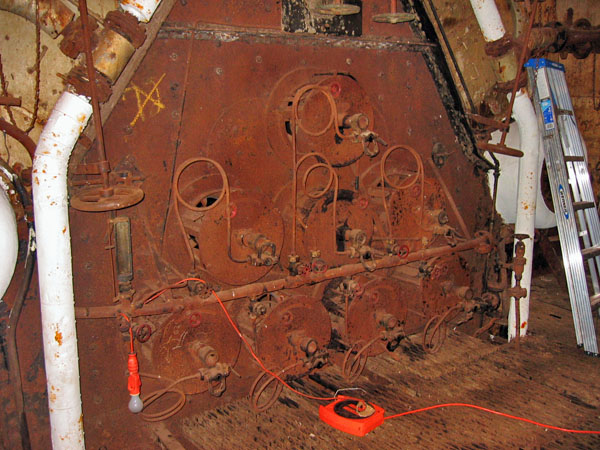
The other boiler in the same room shows the damage salt water can do
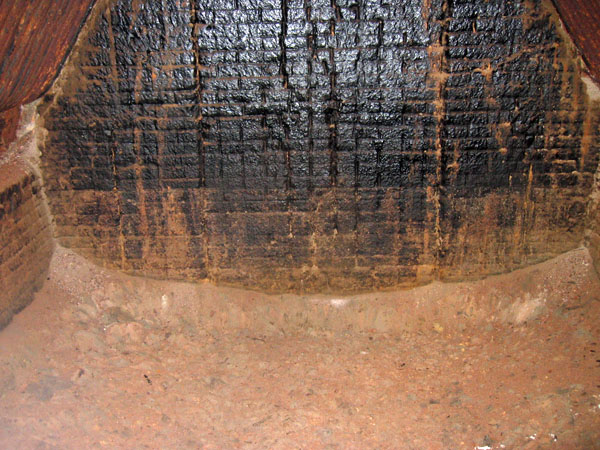
The boiler's oil burning firebox - coal fired boilers were replaced in 1927
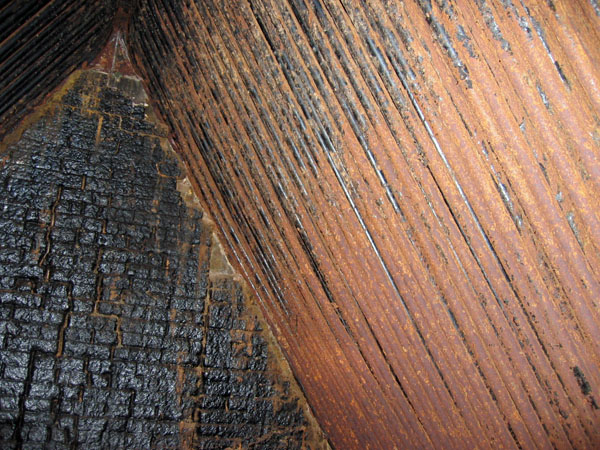
Temperatures exceeding 2,000° quickly turn water to steam inside the tubes and move the turbines
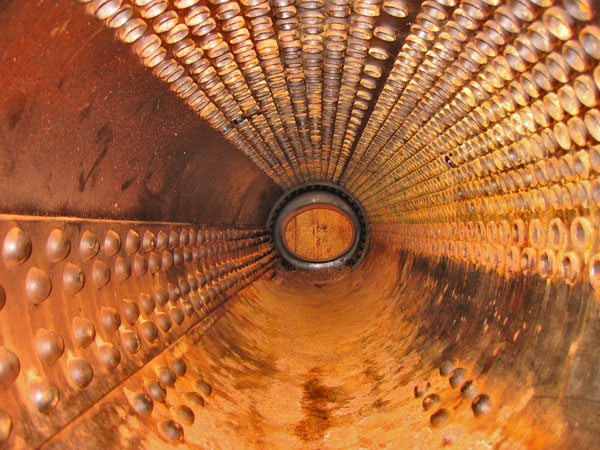
Cooler water flowed through the mud drums into tubes above, rivets indicate 1920's construction
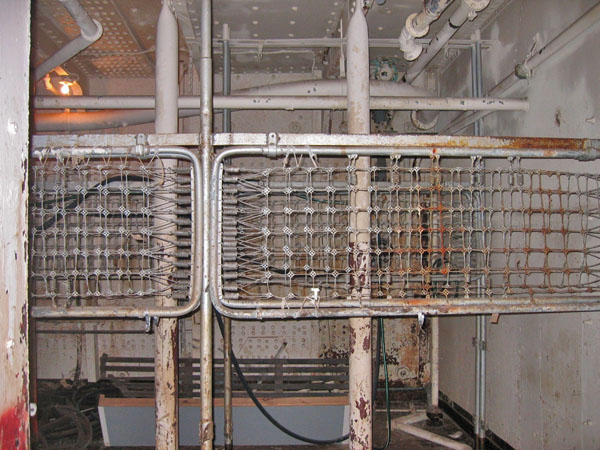
Crew grew from 800 to 1800 between WWI & WWII and bunks are everywhere
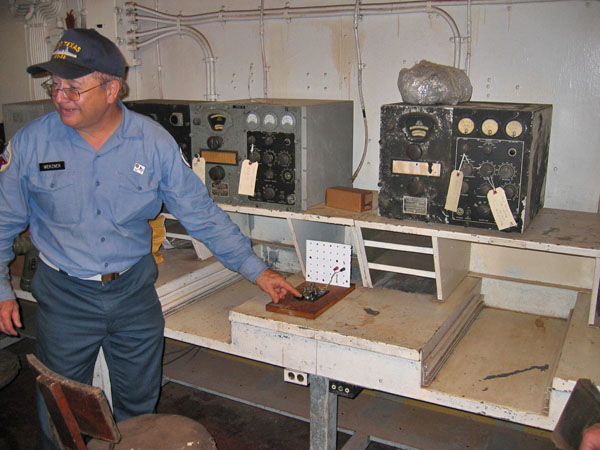
Main Radio Room sent and received Morse Code, just like texting!
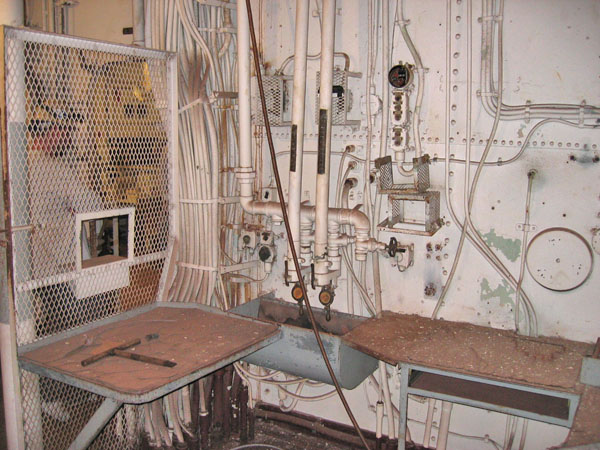
Messages were decoded in the secure Coding Room
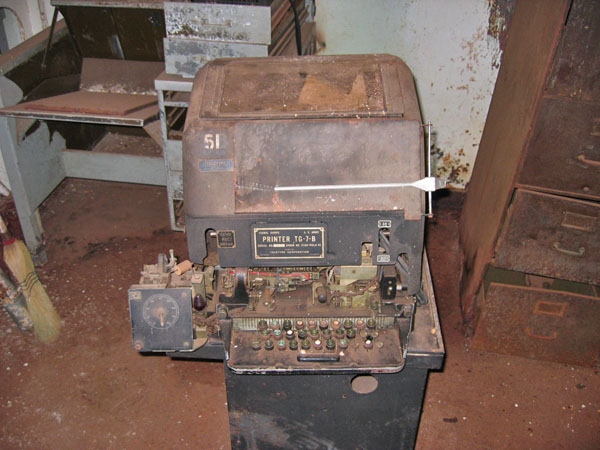
Only the latest equipment was used like this Teletype Printer
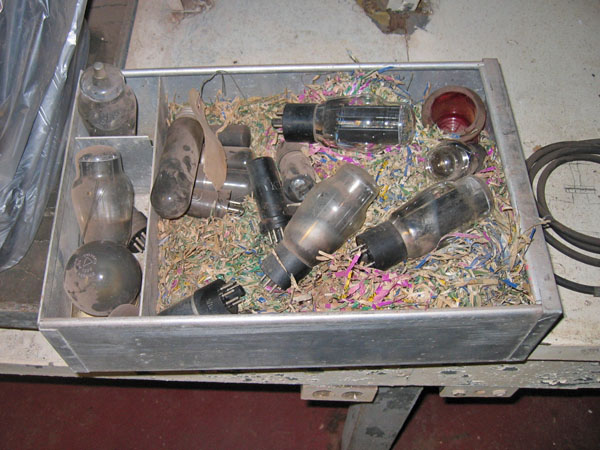
Also plenty of spare tubes for a quick repair job
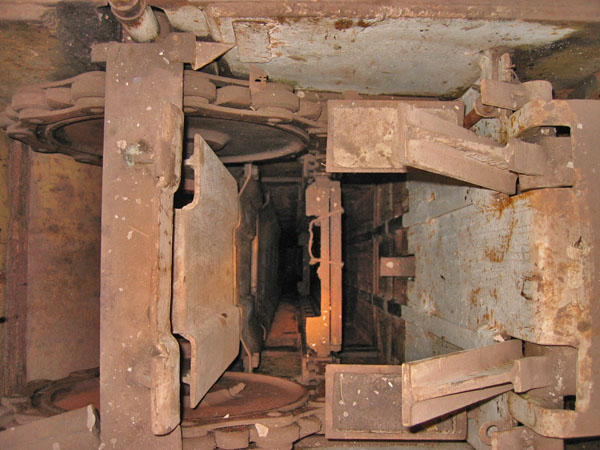
Shaft for lowering supplies deep into the ship
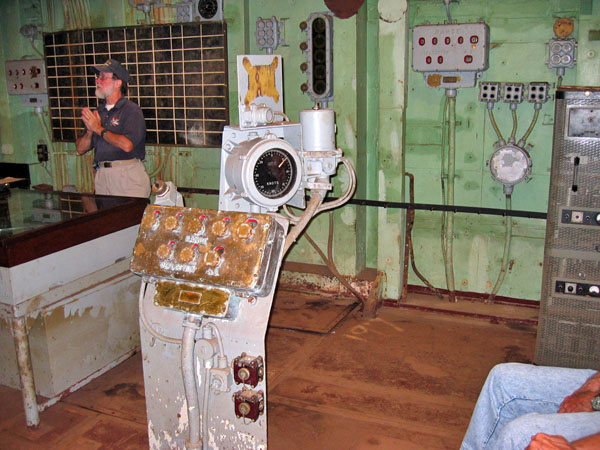
The Plotting Room is the brains for the 14 inch guns
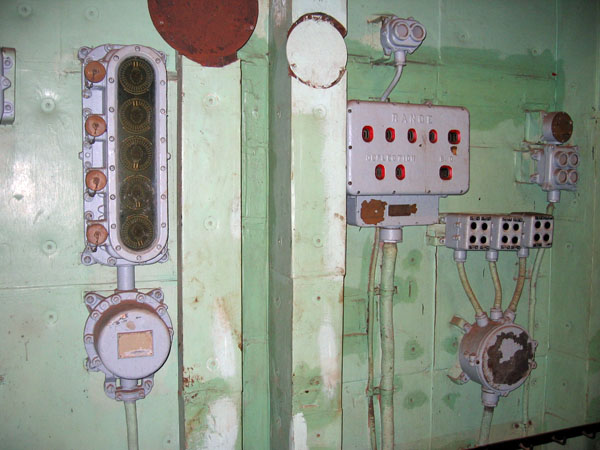
Range & deflection indicator and turret ready lights help target & gun status
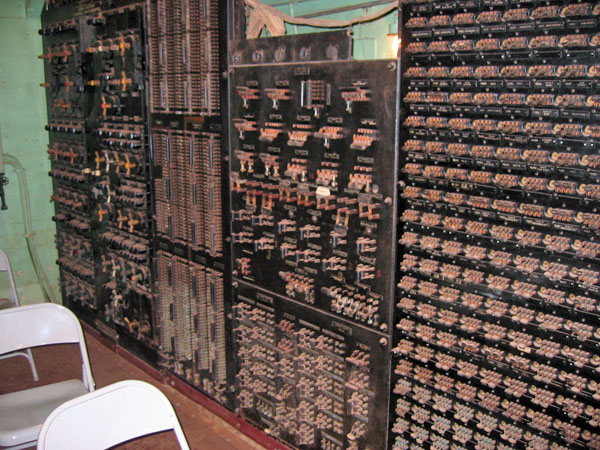
Main Battery Control Switchboard gave control of the turrets to the range keeper selected to aim them
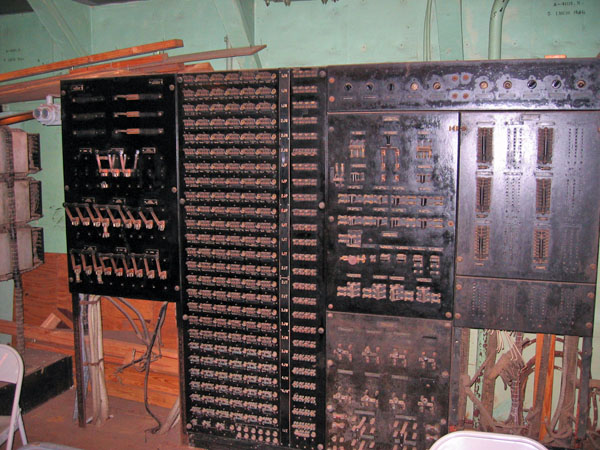
Sound powered phone system enabled communication throughout other parts of the ship
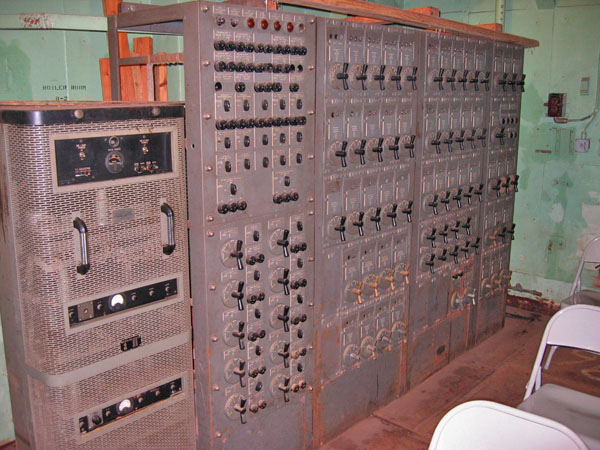
More switchboards used to control functions to and from both turrets and spotting stations
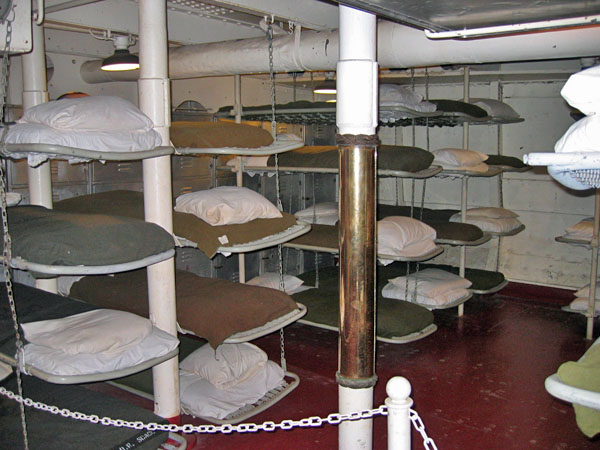
Pass more bunks while climbing up and out to the main deck then head toward the bow to get inside Turret #1
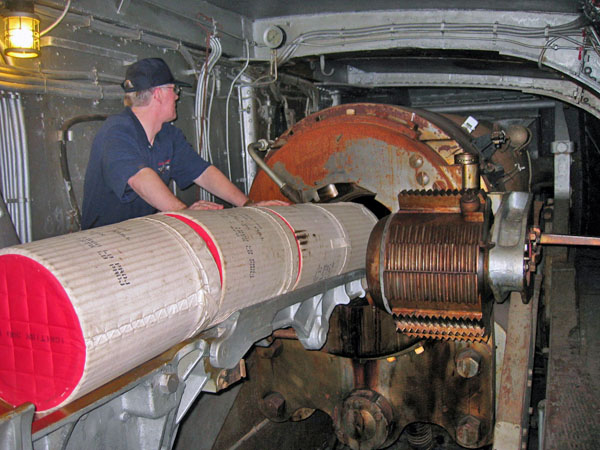
Inside Turret #1's right gun house, four charges are hand loaded & rammed after the projectile
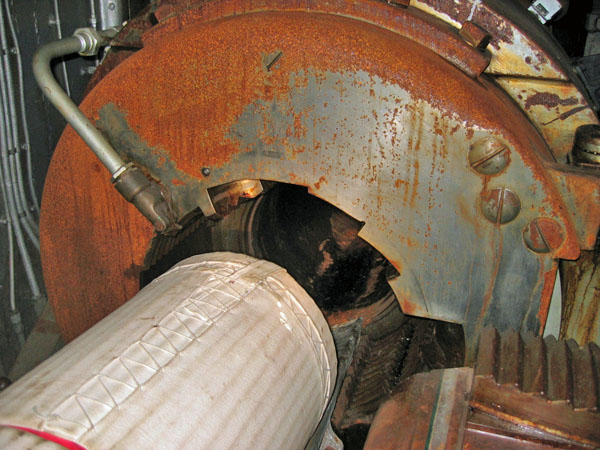
After firing, the breech is cleared of burning embers by top left nozzle using compressed air
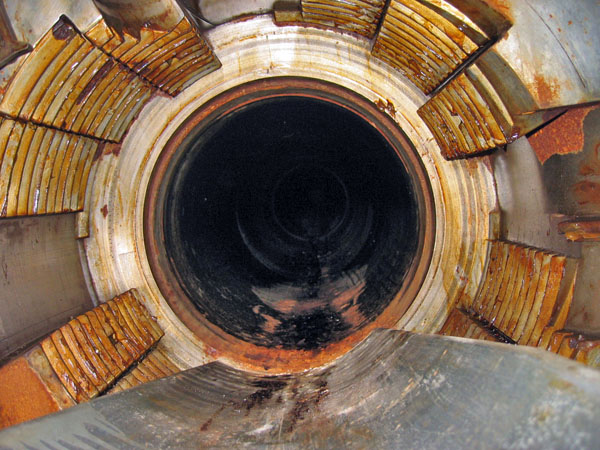
Looking down the barrel of the 14 inch rifle which can be readied to fire in 45 seconds
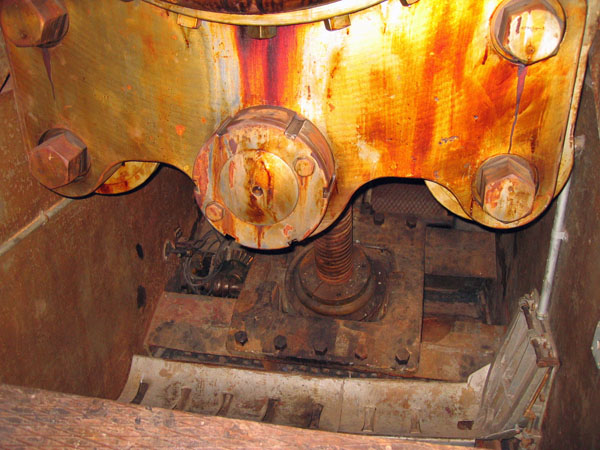
Charges hoisted to the gun pit are hand lifted up to the loading tray, then duck your head for firing
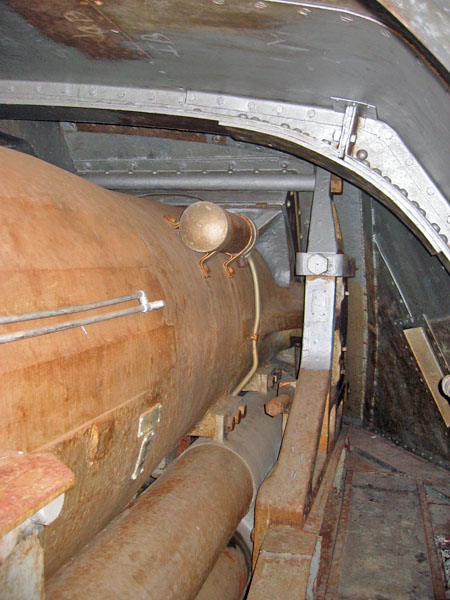
View of the barrel in the gun house toward the front of the turret

Pausing to view the San Jacinto Monument after leaving Turret #1 and climbing the superstructure

The Combat Information Center provided the data for making decisions and selecting targets while fighting
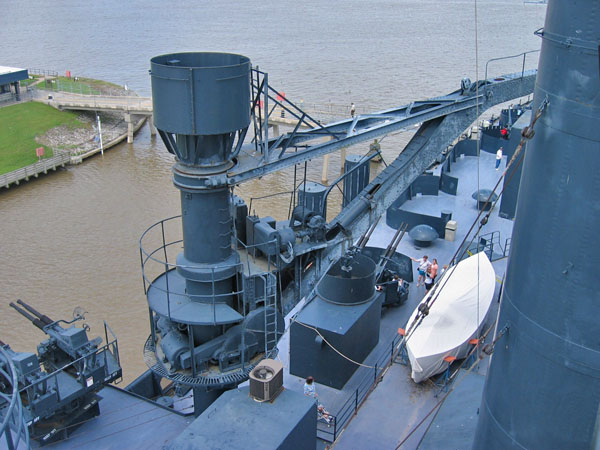
View of crane below the Combat Information Center & two quad gun mounts

View of other crane with ship channel and passing vessel in background
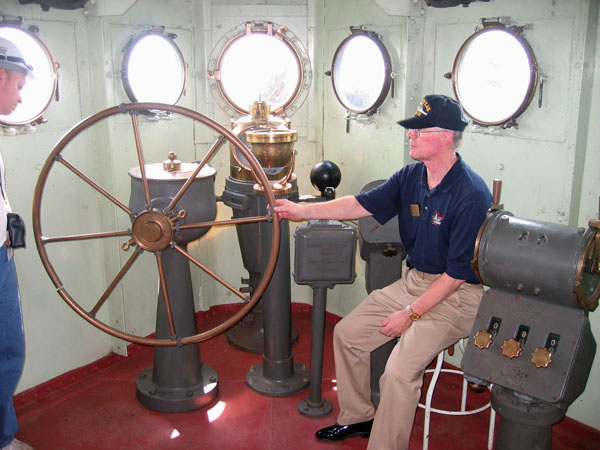
On June 25, 1944, a 240mm german shell from Cherbourg hit the Pilot House, killed the helmsman, and wounded everyone else
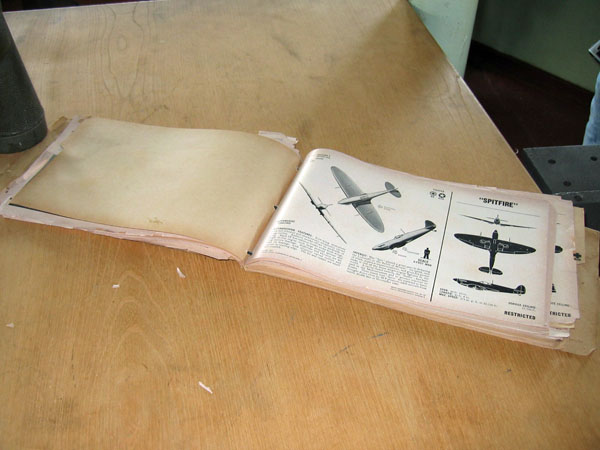
An aircraft identification book, probably from the European theater as the Spitfire was a rare bird in the Pacific
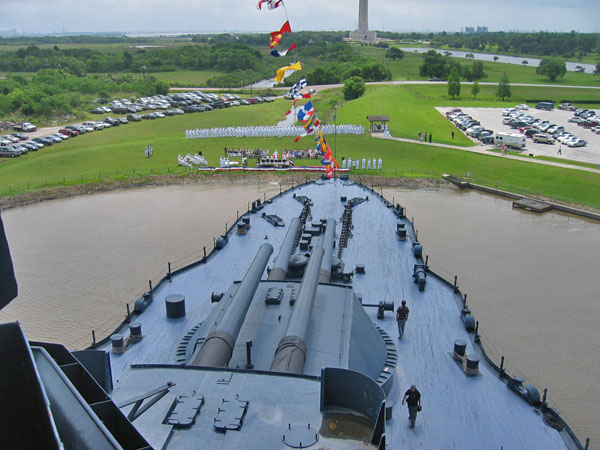
Step outside the Pilot House to see a ceremony taking place onshore
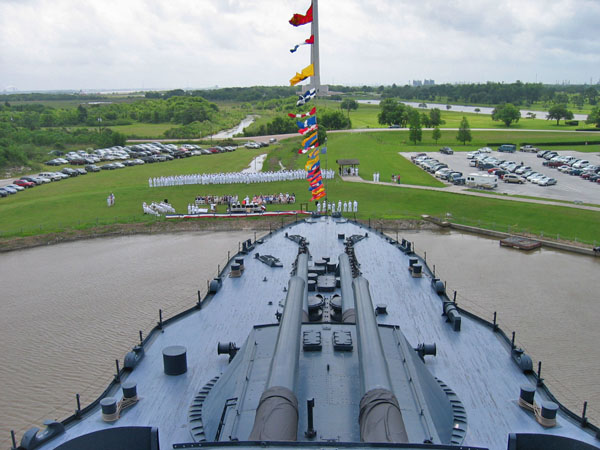
The Navy is having a ceremony between the Texas & San Jacinto Monument
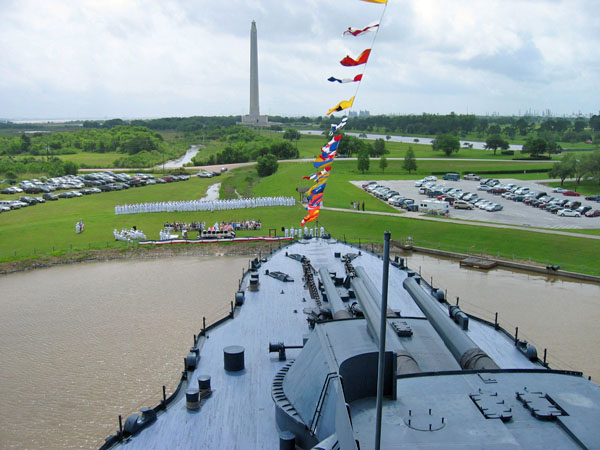
So the displayed battle flags weren't for the benefit of our tour?
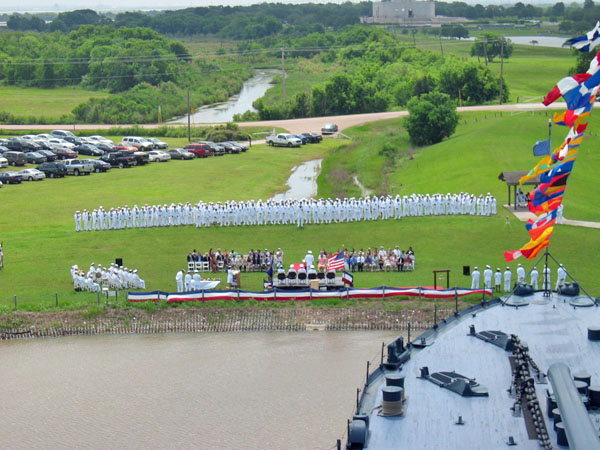
Command of the regional naval recruitment office . . .
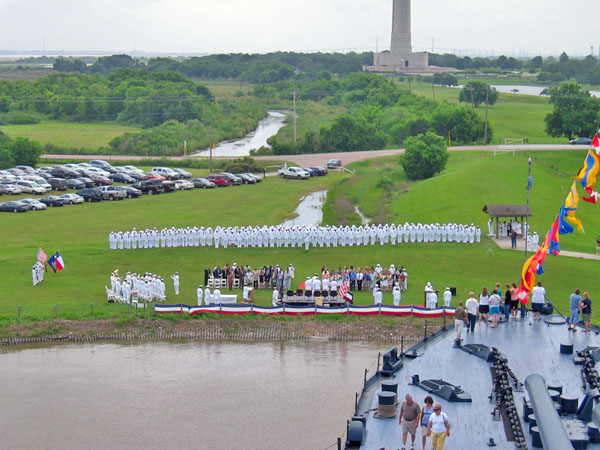
. . . was transferred to a new commander while spectators watch onboard
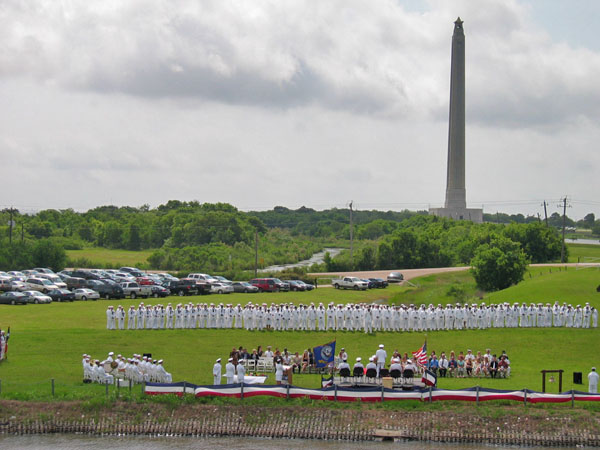
You couldn't pick a better location for the ceremony
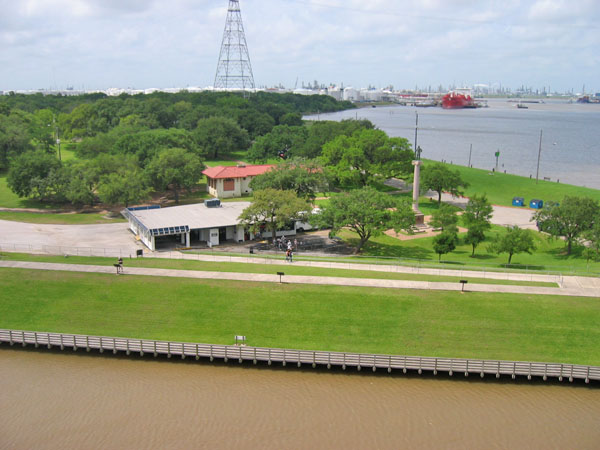
View of battleship giftshop and Texian campsite beyond
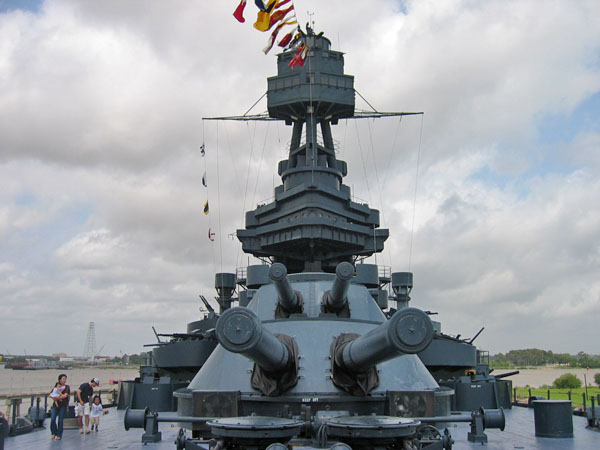
View of the forward big guns of the Texas
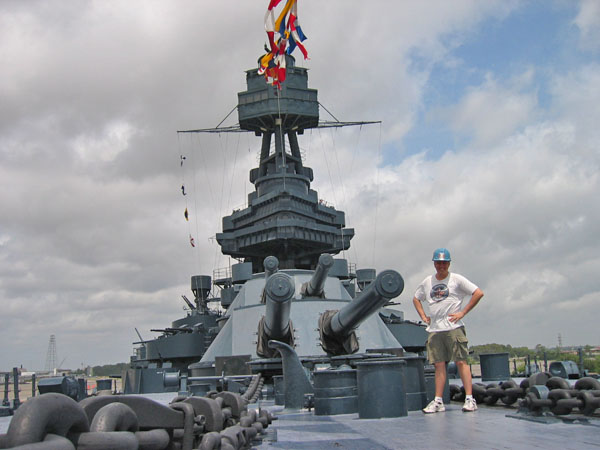
David would rather be inside the turret during firing
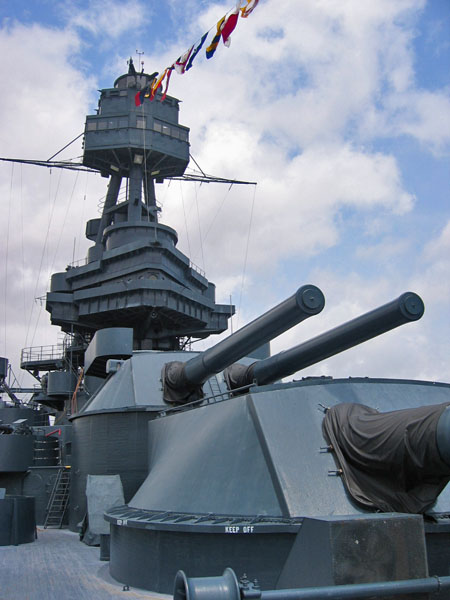
View of superstructure heading back to the exit
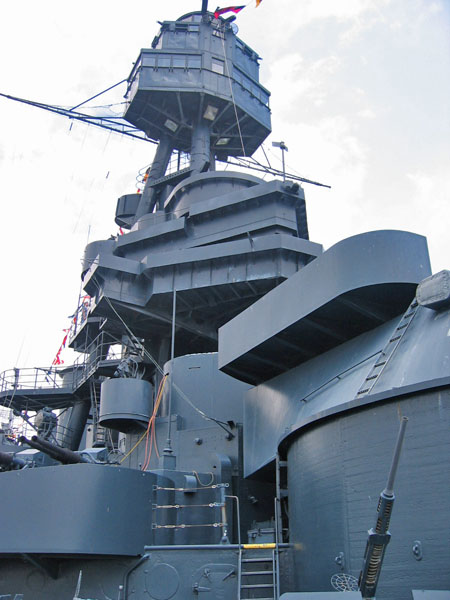
Less big guns and more forward conning tower

Head to the portside 5 inch gun area designed prior to WWI
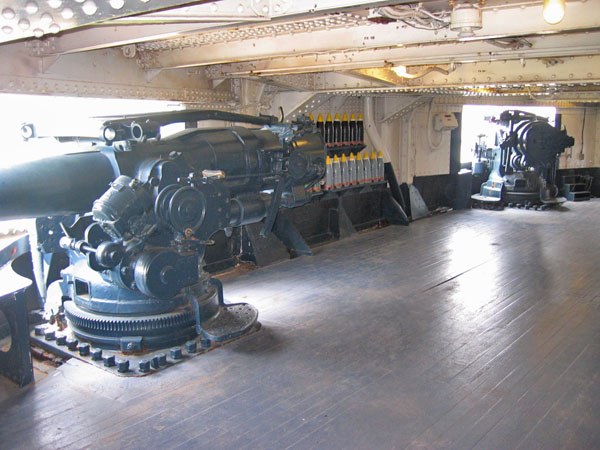
Three 5 inch guns on each side not contained within turrets
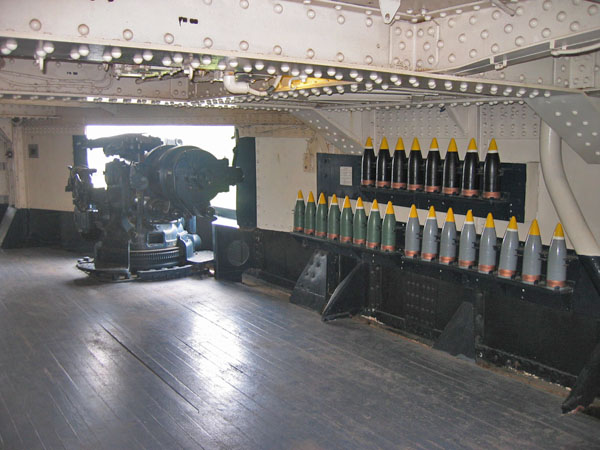
Good for shore battery but not anti-aircraft or exploding powder charges
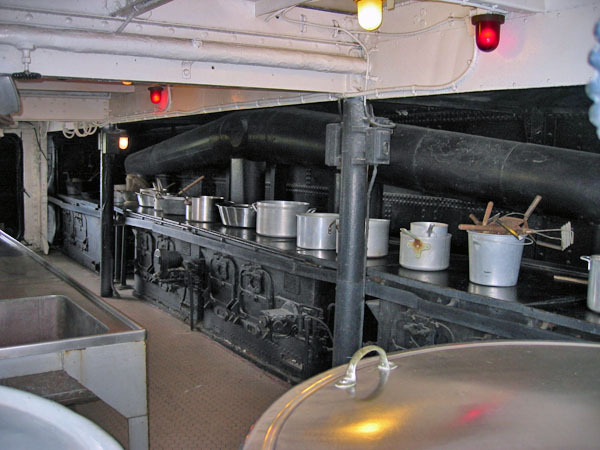
Pass by the Galley on the way to Turret #3
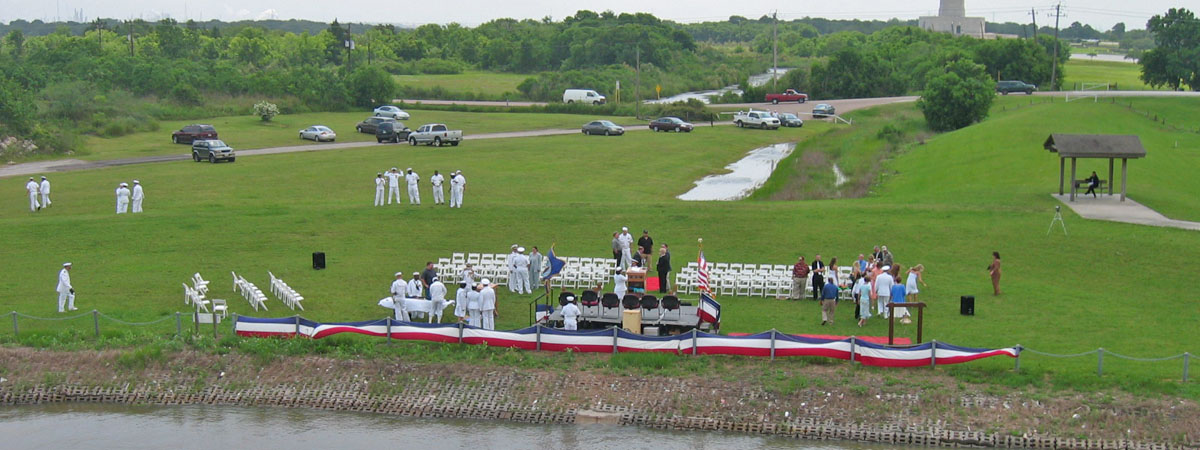
Step back on deck to see the naval ceremony has concluded and most attendees are beginning to disperse
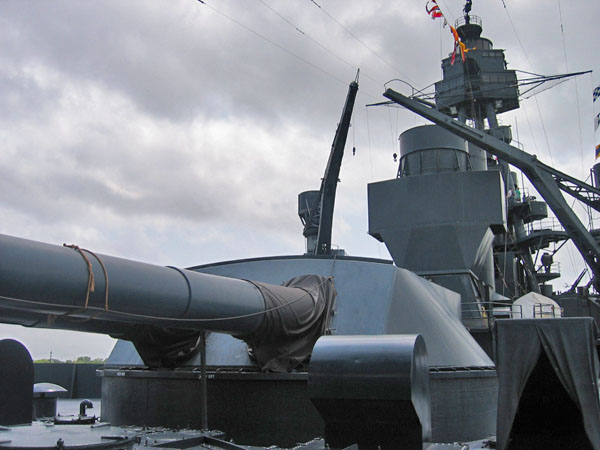
Head towards the stern and walk past the center #3 turret
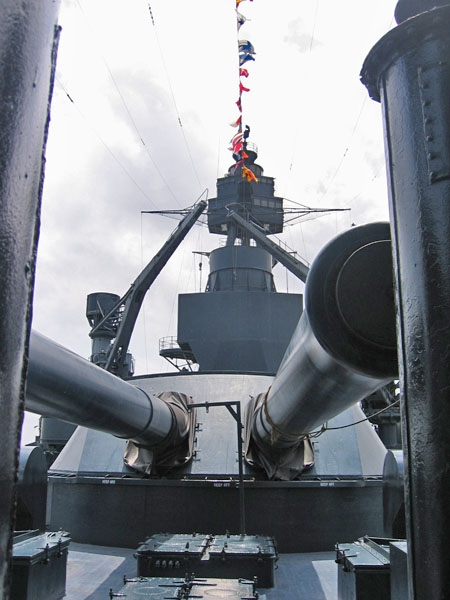
The aft facing #3 Turret once had an aircraft catapult mounted
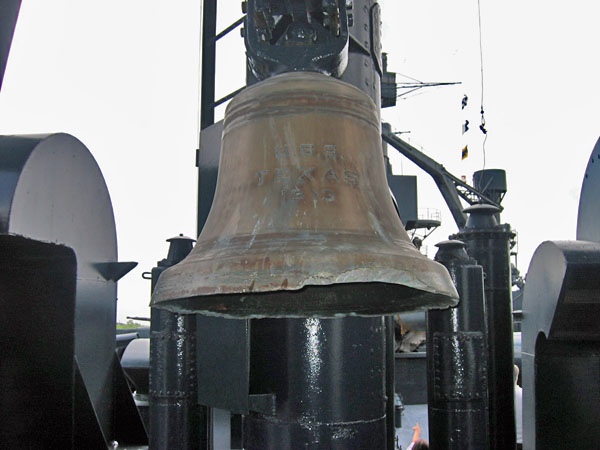
Ship's bell dated 1913 aft of Turret #3
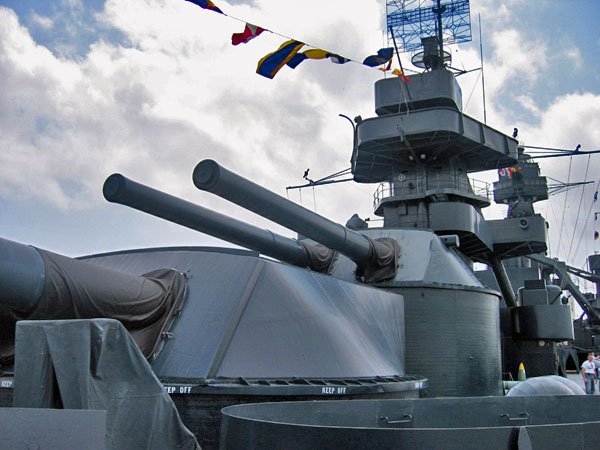
Turrets #5 and #4 viewed from beyond the aft machine gun pits
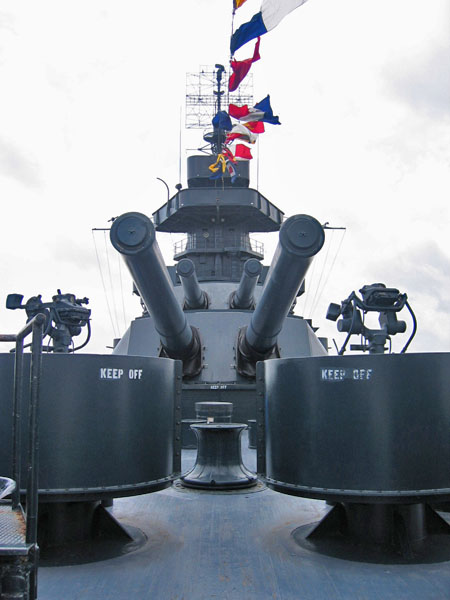
View of the aft big guns from the Texas' stern
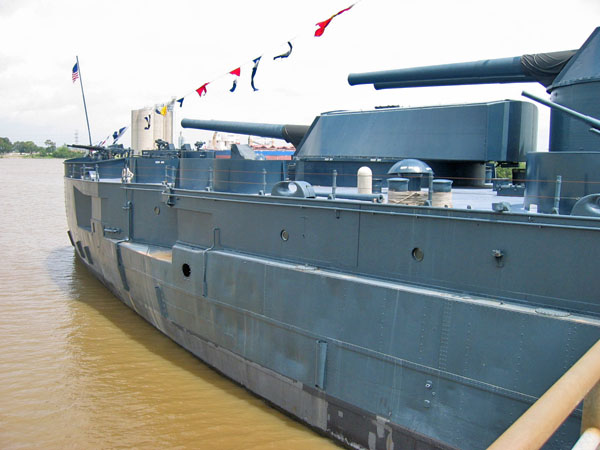
Exit the ship and look back toward Turrets #5 and #4
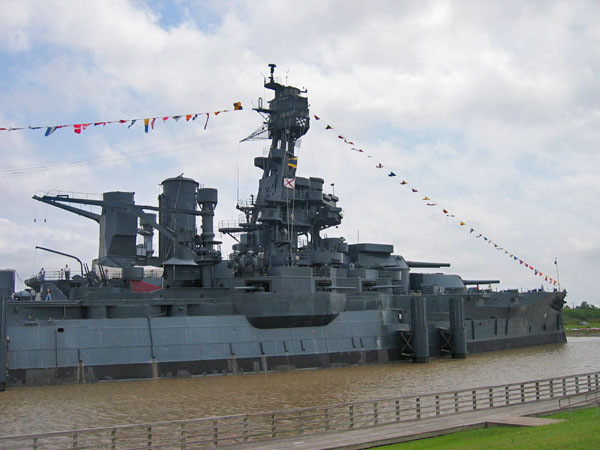
View of the Texas with full display of battle flags from back on dry land
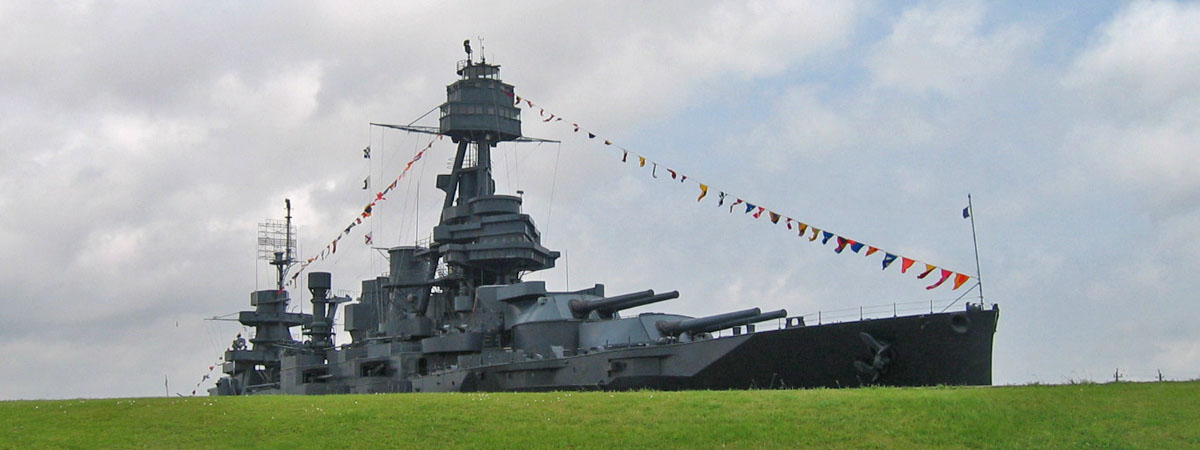
When commissioned in 1914, the Battleship Texas, the first warship with 14 inch guns (ten), was the most powerful weapon on the face of the earth